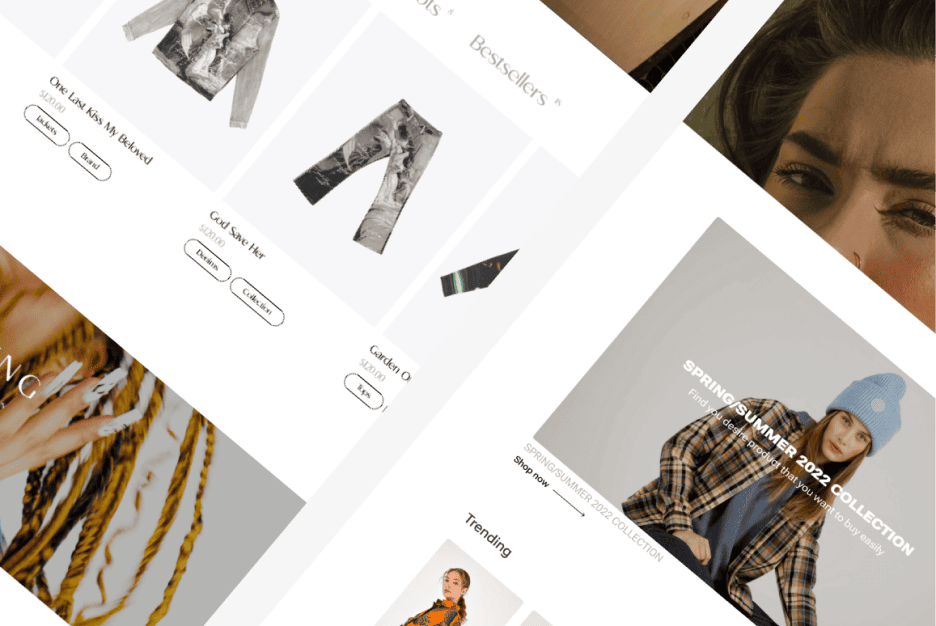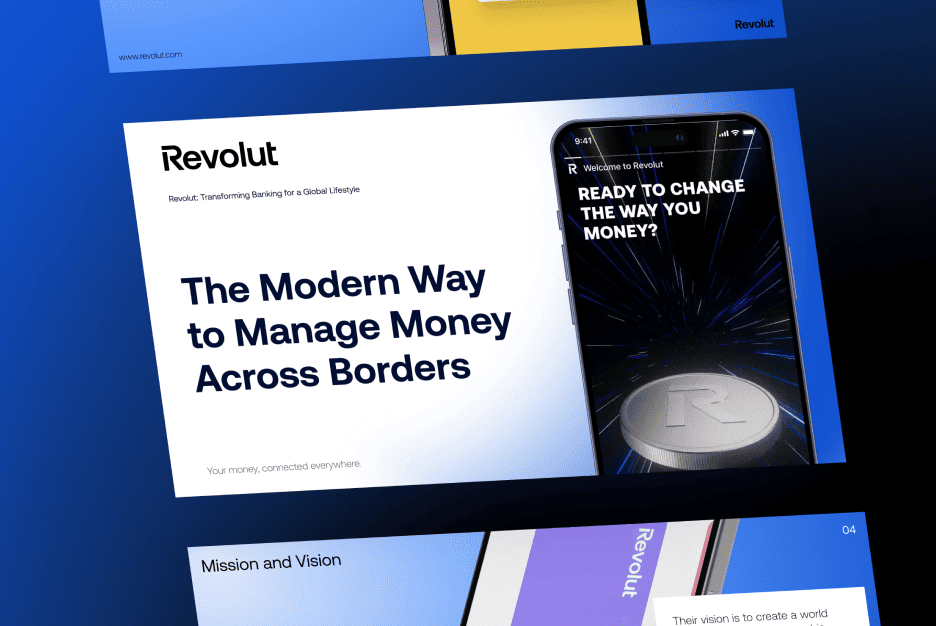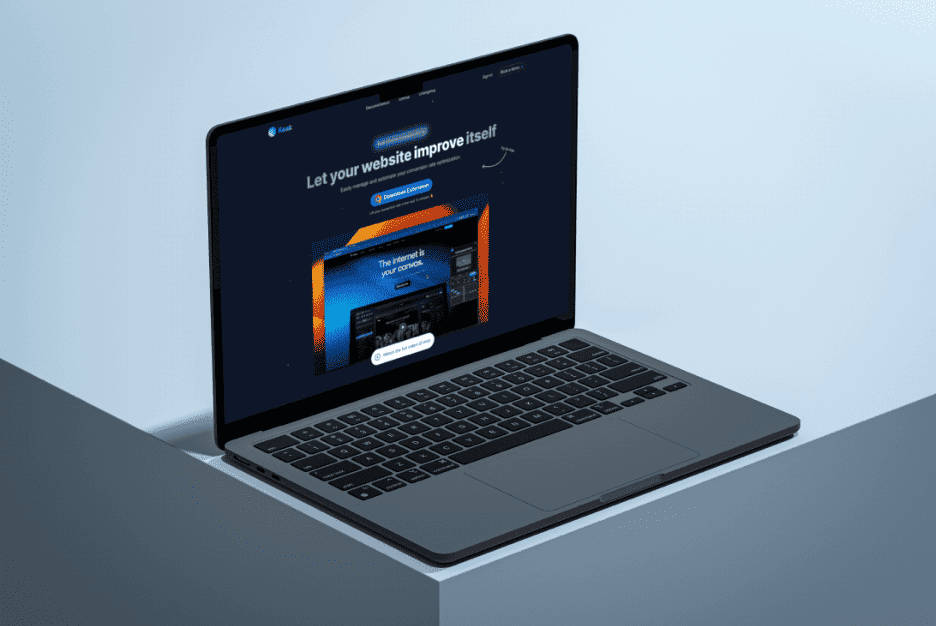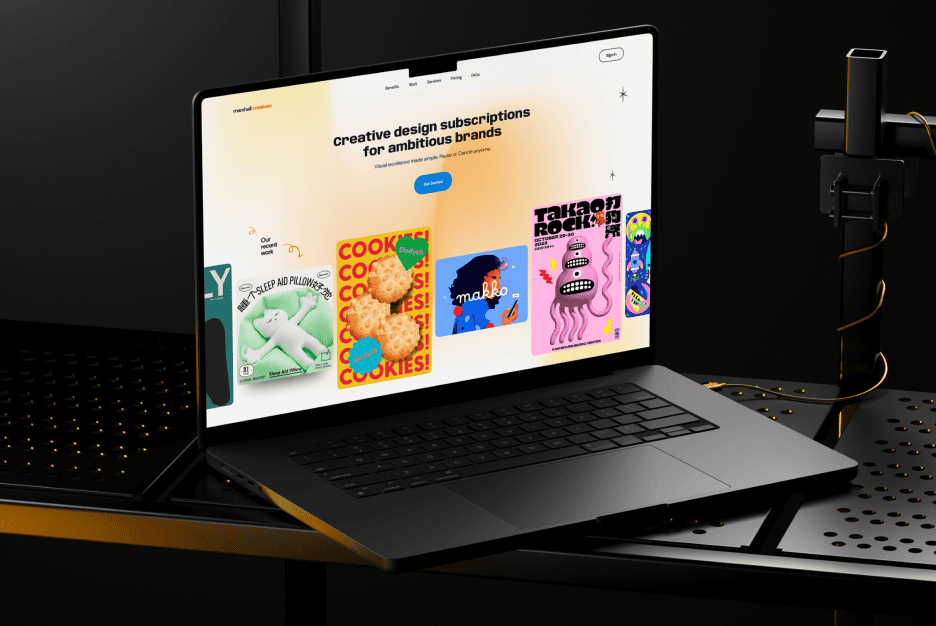Website Glossary: Breaking Down Web Design Phrases for Newbies
Did you know that 53% of people have experienced burnout, stress, and fatigue due to communication issues in their business? Misunderstandings can lead to delays, increased costs, and even a final product that doesn’t meet your expectations. That’s why it’s crucial to understand basic web design terms. At Almax, we understand how critical clear communication is—especially when working with design teams on something as vital as your website. In this article, we’ll provide you with a comprehensive website glossary, breaking down key web design terms so you can communicate effectively with your design team, avoid stress, and ensure your website truly reflects your vision.
Introduction to Website Design Terms: Why Understanding the Basics Matters
Whether you’re building your first website or revamping an existing one, understanding basic web design terms is crucial. It’s not just about sounding knowledgeable—it’s about being an active participant in the creation process. Let’s explore how this understanding benefits you.
Improves Communication
Knowing web design terms helps you communicate more clearly with designers and developers. When everyone speaks the same language, projects run smoother, and outcomes are more aligned with your vision.

Informed Decision-Making
Understanding the terminology enables you to make informed decisions about your website’s design, functionality, and overall strategy. You’ll be better equipped to weigh options and choose what’s best for your site.
Better Collaboration
A shared understanding of web design terms fosters better collaboration between you and your team. This alignment ensures that everyone is on the same page, reducing the risk of miscommunication and errors.
Cost Efficiency
By knowing what different web design terms mean, you can avoid unnecessary costs. You’ll understand what you’re paying for and can make sure you’re getting the best value for your investment.
Enhances Problem-Solving
When issues arise, a solid grasp of web design terms allows you to troubleshoot more effectively. You’ll be able to follow advice from professionals and implement solutions more efficiently.
Empowers Control
Knowledge of web design terminology gives you greater control over the process. You’ll feel more confident in making decisions and guiding the direction of your website.
Boosts Confidence
Understanding the lingo boosts your confidence, making you feel more competent and less intimidated by the design process.

Increases Website Effectiveness
Finally, knowing these terms helps ensure your website is as effective as possible, whether your goals are increasing user engagement, improving SEO, or enhancing user experience.
Essential Graphic Design Terminology Every Website Owner Should Know
Web design isn’t just about coding and functionality; it’s also about aesthetics and visual communication. Below, we’ve outlined some essential graphic design terminology that every website owner should be familiar with.
Typography
Typography refers to the art of arranging text in a visually appealing way. It’s not just about choosing a font—it’s about how that font is used to enhance readability and convey your brand’s message.
Color Theory
Color theory involves the study of how colors interact and the emotions they evoke. Understanding this helps you create a cohesive and visually appealing color scheme for your website.

CMYK and RGB
CMYK is used for printing, while RGB is used for digital screens. Knowing the difference ensures that your colors look right in both print and on the web.
Resolution
Resolution refers to the clarity of an image, which is crucial for ensuring that your website looks sharp and professional.
White Space (Negative Space)
White space, or negative space, is the empty area around elements in your design. It helps to prevent clutter and improves readability.
Grid System
A grid system is a structure of intersecting lines used to organize content. It ensures consistency and alignment throughout your design.
Balance
Balance involves distributing visual elements evenly to create a harmonious design. This can be symmetrical or asymmetrical, depending on your desired effect.
Contrast
Contrast refers to the difference between two elements, such as light and dark or big and small. It helps to draw attention and create visual interest.
Hierarchy
Hierarchy organizes content by importance, guiding the viewer’s eye to the most critical information first.
Branding
Branding is the process of creating a unique identity for your business through visual elements like logos, colors, and typography.
Vector and Raster Graphics
Vector graphics are scalable without losing quality, while raster graphics can become pixelated when resized. Knowing which to use is key to maintaining image quality.
Logo
Your logo is a symbol that represents your brand. It should be versatile and instantly recognizable.
Iconography
Iconography involves the use of symbols or icons to represent ideas or actions, making your design more intuitive.
Opacity
Opacity refers to the transparency level of an element. Adjusting opacity can create layering effects and add depth to your design.
Gradient
A gradient is a gradual transition between colors. It adds depth and visual interest to backgrounds and buttons.
Kerning
Kerning is the adjustment of space between characters in a text. Proper kerning improves readability and the overall look of your text.
Mockup
A mockup is a visual representation of how your website or design will look. It’s used to preview and refine the design before it goes live.
Pixel
A pixel is the smallest unit of a digital image or screen. Understanding pixels is essential for creating sharp, high-quality designs.
Aspect Ratio
Aspect ratio is the relationship between an image’s width and height. Maintaining the correct aspect ratio prevents distortion.
Bleed
Bleed refers to the area beyond the edge of your design that will be trimmed off. It ensures that your design extends to the edge without leaving white borders.

Common Web Design Terms: Breaking Down the Essentials
Now that we’ve covered graphic design, let’s dive into some common web design terms that are essential for anyone involved in creating or managing a website.
HTML (HyperText Markup Language)
HTML is the standard language used to create and structure content on the web. It’s the foundation of every website.
CSS (Cascading Style Sheets)
CSS is used to control the layout, colors, fonts, and overall visual appearance of your website.
JavaScript
JavaScript is a programming language that adds interactivity and dynamic content to your website.
Responsive Design
Responsive design ensures that your website looks and functions well on all devices, from desktops to smartphones.
User Experience (UX)
UX refers to the overall experience a user has when interacting with your website. It focuses on ease of use, accessibility, and satisfaction.
User Interface (UI)
UI is the layout and design elements that a user interacts with on your website, such as buttons, menus, and forms.
See our UI/UX Design services here!
Wireframe
A wireframe is a basic layout that outlines the structure of your web page without focusing on design details.

Mockup
As mentioned earlier, a mockup is a detailed visual representation of how your website will look.
CMS (Content Management System)
A CMS allows you to create, manage, and modify content on your website without needing specialized technical knowledge.
Domain Name
Your domain name is your website’s address on the internet, like www.yourwebsite.com.
Hosting
Hosting is the service that stores your website’s files and makes them accessible online.
SEO (Search Engine Optimization)
SEO is the practice of optimizing your website to rank higher in search engine results, improving visibility and traffic.
Navigation
Navigation refers to the system that allows users to move around your website, including menus and links.
Breadcrumbs
Breadcrumbs are a secondary navigation system that shows users their location within your website.
Call to Action (CTA)
A CTA is a prompt that encourages users to take a specific action, such as “Sign Up” or “Buy Now.”
Above the Fold
“Above the fold” refers to the portion of your web page that is visible without scrolling. It’s often the most critical part of your design.
Hero Image
A hero image is a large, prominent image at the top of your web page, used to grab attention.
SSL Certificate (Secure Sockets Layer)
An SSL certificate encrypts data transferred between your website and its users, ensuring security.
Favicon
A favicon is a small icon that represents your website in the browser tab.
Alt Text
Alt text is descriptive text added to images, which helps with accessibility and SEO.
What’s the Section at the Top of a Website Called? Understanding Headers and Navigation
One of the most common questions we get is, “What’s the section at the top of a website called?” This section is known as the header, and it typically includes your logo, navigation menu, and sometimes a CTA or search bar. Understanding the role of the header and how to design it effectively is crucial, as it’s often the first thing visitors see when they land on your site.
Conclusion: Website Glossary
In conclusion, understanding basic web design terms is not just about mastering the language of designers and developers—it’s about empowering yourself to make informed decisions, improving communication, and ensuring your website truly reflects your vision and goals. By familiarizing yourself with these essential terms, you can collaborate more effectively with your design team, avoid costly misunderstandings, and create a website that stands out in today’s competitive digital landscape. If you are looking for the best design agency Washington services to help you, contact Almax today!











